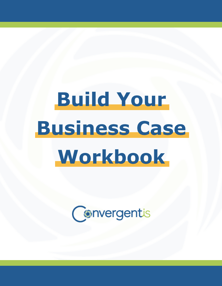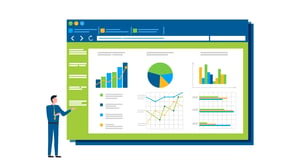The Procurement Maturity Model is a framework that organizations use to assess and enhance their procurement processes. It typically consists of different maturity levels, each representing a stage of development in the organization's procurement capabilities. These levels often progress from basic and ad-hoc processes to more advanced, strategic, and optimized practices.
The model helps organizations evaluate their current procurement practices, identify areas for improvement, and establish a roadmap for evolving towards more mature and efficient procurement operations. Key elements assessed in the model may include governance, technology adoption, risk management, supplier collaboration, and overall process efficiency. By following this model, organizations can align their procurement practices with business objectives and industry best practices. So, where does your team stack up?
What Are The Different Levels In The Procurement Maturity Model?
Procurement Maturity Models typically consist of several levels, each representing a stage of development in an organization's procurement capabilities. The exact number of levels may vary between models, but a common structure includes the following:
Level 1: Ad-Hoc or Reactive
Processes are informal, decentralized, and often reactive to immediate needs. There is minimal standardization, and procurement activities are carried out on a case-by-case basis.
Level 2: Defined or Managed
Basic processes are defined and documented. Some standardization is introduced, and there may be centralized control over certain aspects of procurement. However, processes may still lack consistency.
Level 3: Standardized or Strategic
Procurement processes are standardized and well-defined across the organization. Strategic planning becomes more prevalent, with an emphasis on cost savings, efficiency, and risk management.
Level 4: Managed or Integrated
Procurement becomes a more integrated part of overall organizational strategy. Advanced technologies are often adopted for automation, data analytics, and improved decision-making. Supplier relationships are managed strategically.
Level 5: Optimize or World-Class
Procurement processes are continuously optimized for efficiency, effectiveness, and strategic impact. Advanced technologies, data-driven insights, and collaboration with suppliers are central to procurement operations. The organization is considered a leader in procurement practices.
How To See Where Your Team Adds Up
To determine where your team fits in the Procurement Maturity Model, consider the following steps:
Conduct a Self-Assessment
Evaluate your team's current procurement processes, practices, and capabilities against the characteristics of each maturity level. Be honest and objective in your assessment.
Utilize Maturity Model Frameworks
Leverage existing Procurement Maturity Models or frameworks to guide your assessment. These frameworks often provide detailed criteria for each maturity level.
Benchmark Against Best Practices
Compare your team's practices against industry best practices. Identify areas where your team excels and areas that need improvement based on widely accepted standards.
Evaluate Technology Adoption
Consider the technology tools and systems your team uses for procurement. Mature teams often leverage advanced technologies for automation, analytics, and collaboration.
Assess Supplier Relationships
Evaluate the depth and strategic nature of your team's relationships with suppliers. Mature teams often engage in strategic partnerships and collaboration for mutual benefit.
Review Governance and Compliance
Assess the governance structure and compliance measures in place. Mature teams typically have robust governance frameworks and comply with relevant regulations.
Analyze Key Performance Indicators (KPIs)
Examine the metrics and KPIs your team uses to measure procurement performance. Mature teams align KPIs with strategic objectives and demonstrate continuous improvement.
Seek External Feedback
Engage with external experts, consultants, or industry peers to gain an external perspective on your team's maturity level.
By going through these steps, you can gain a comprehensive understanding of your team's position in the Procurement Maturity Model. This assessment will help you identify areas for improvement and develop a roadmap for advancing to higher maturity levels.
Getting To The Next Level
The three pillars of Procurement—people, process, and technology—are integral to achieving advanced Procurement maturity, and their synergy is paramount. Advancing an organization to the second stage of maturity and beyond necessitates a robust technological foundation that complements and supports both the people and processes within the organization. Effectively navigating change, both within the Procurement team and across the entire organization, presents challenges, but the investment in this transformation is undeniably valuable.


